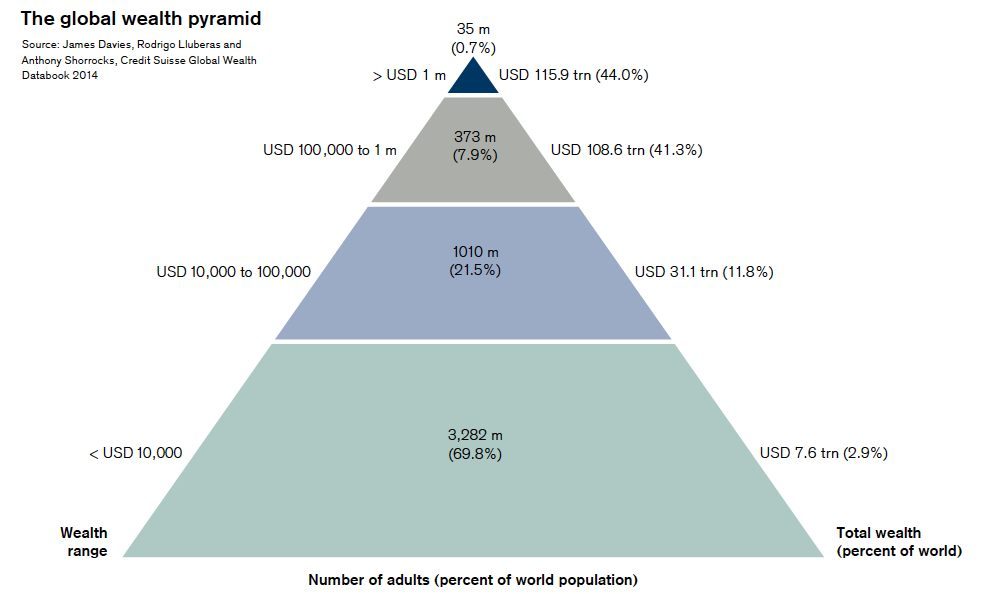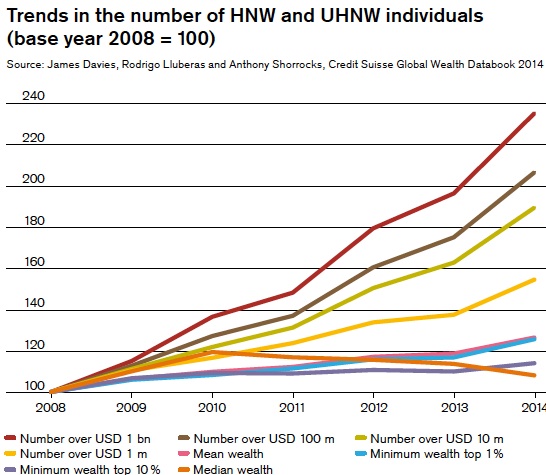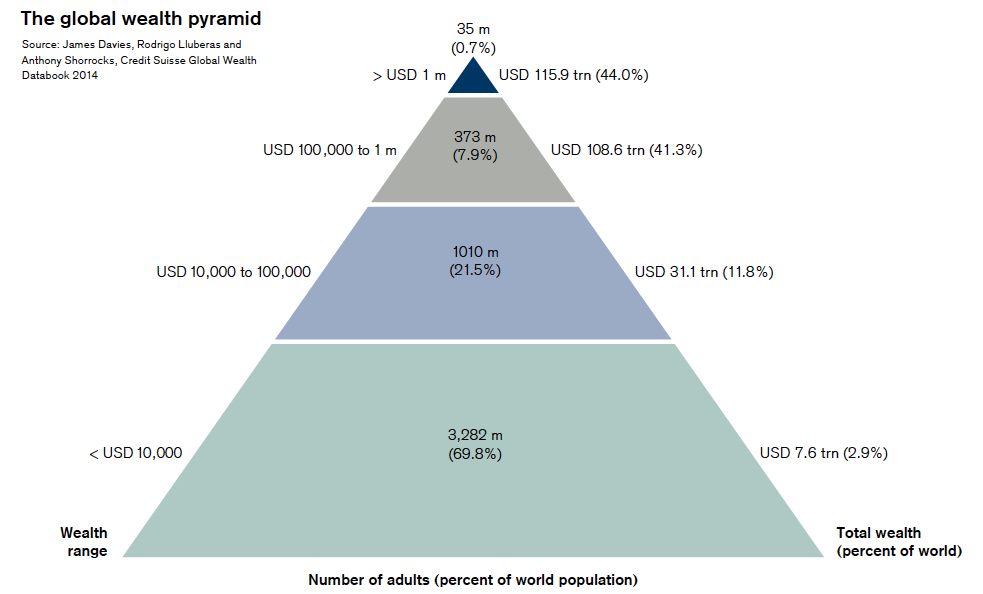
Nick Shaxson ■ Picture of the day: the global wealth pyramid

Credit Suisse’s new Global Wealth Report is out. As always, it contains a ream of useful data. For instance, it estimates that global household wealth reached US$263 trillion in mid-2014, up from $117 trillion in 2000:
“Between 2008 and mid-2014, mean wealth per adult grew by 26%; but the same period saw a 54% rise in the number of millionaires, a 106% increase in the number with wealth above USD 100 million, and more than double the number of billionaires.”
Most striking, perhaps, is the global wealth pyramid.
The rest is here. If 70 percent of the world’s population owns just 2.9 percent of its wealth, one might ask how successful trickle-down theory has been.
The report’s got a few interesting TJN-style observations, such as this one:
“High levels of taxation on large estates appear to be one of the reasons why wealth inequality declined during the 20th century, as wealthier individuals transferred ownership of core assets during their lifetime. Nowadays, family trusts and similar arrangements are frequently used to mitigate estate tax liability, so the impact is now much weaker.”
Not rocket science, but worth remembering.
We have given Credit Suisse a fair share of deserved criticism in the past, but this publication is a valuable public good, and a strike in their favour.
Related articles

The myth-buster’s guide to the “millionaire exodus” scare story

Money can’t buy health, but taxes can improve healthcare
The elephant in the room of business & human rights
UN submission: Tax justice and the financing of children’s right to education
14 July 2025
One-page policy briefs: ABC policy reforms and human rights in the UN tax convention
Tax justice pays dividends – fair corporate taxation grows jobs, shrinks inequality
UN Submission: A Roadmap for Eradicating Poverty Beyond Growth
A human rights economy: what it is and why we need it

Do it like a tax haven: deny 24,000 children an education to send 2 to school




